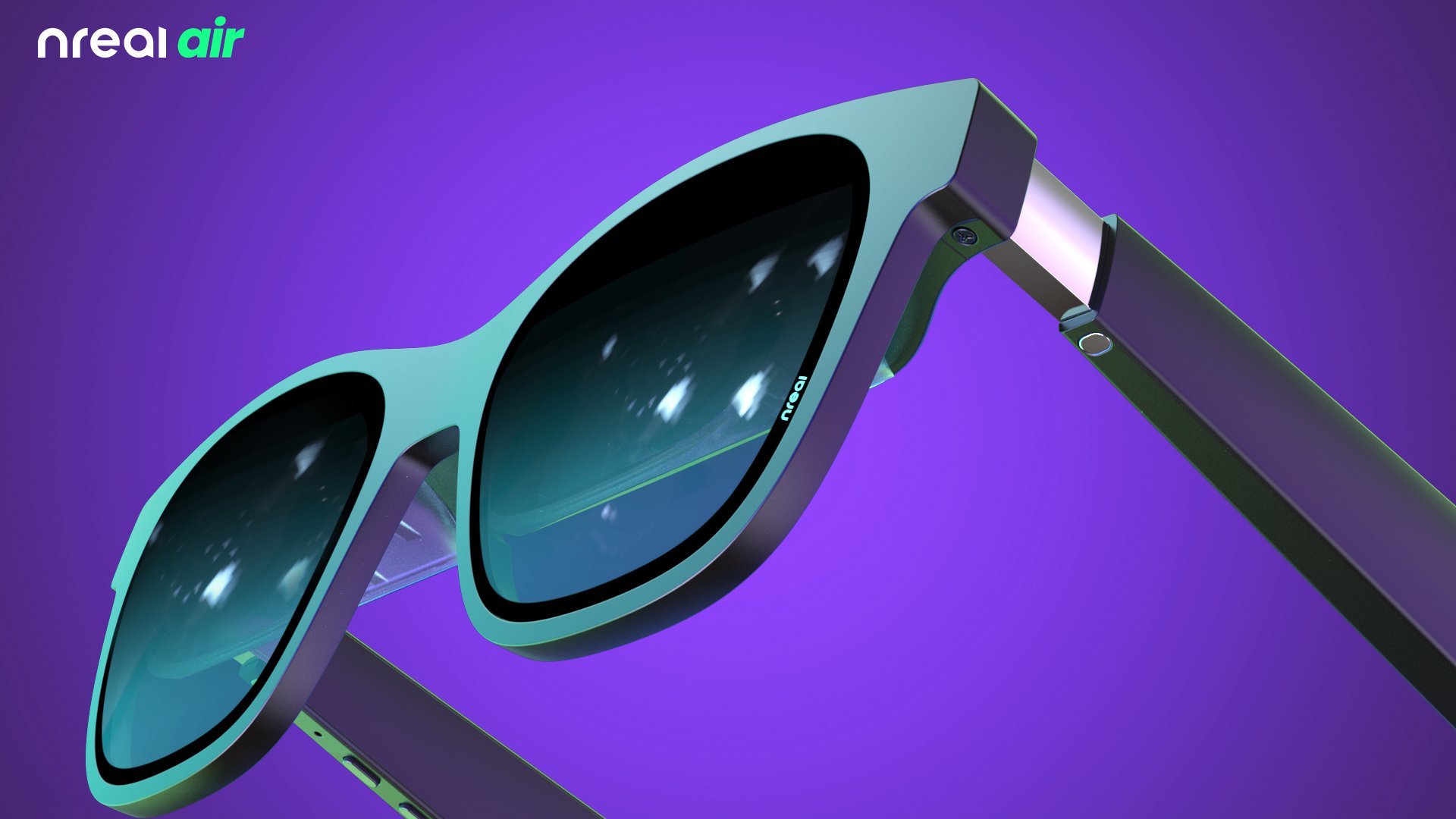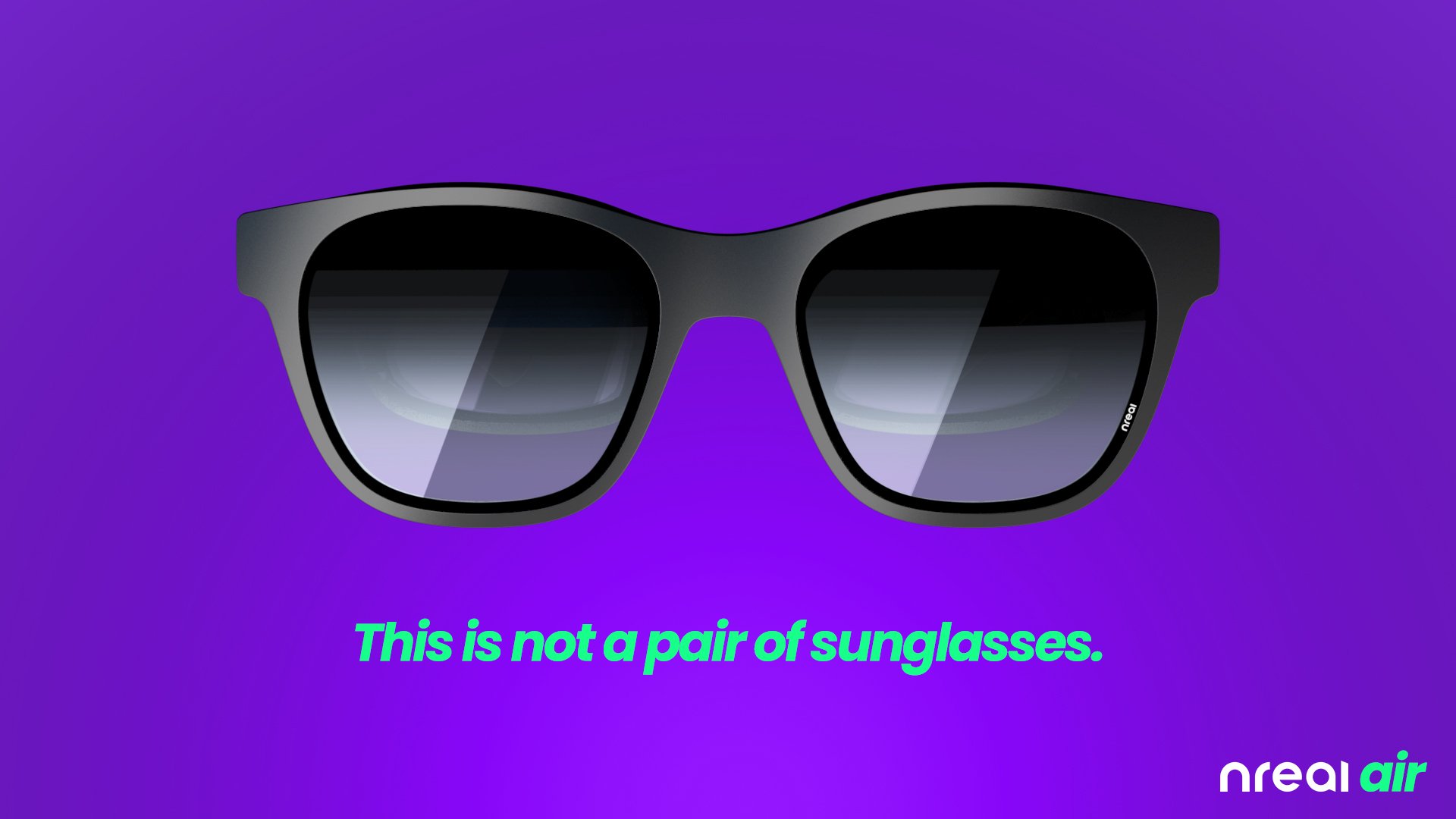Smart glasses are on the rise.
What you need to know
- The Nreal Air AR sunglasses provide a full-vision virtual display for streaming content or playing mobile games.
- They have a micro-OLED chip, 49 pixels-per-degree (PPD), and a 90Hz refresh rate.
- It must be tethered to your iOS or Android phone to display content, but act as regular sunglasses otherwise, with a 77g/ 2.7oz weight.
- Nreal Air will ship to Asian markets in late 2021, followed by "other markets" in 2022.
In early 2020, contributing editor Russell Holly tried out Nreal Light smart glasses and called them "the first set of Mixed Reality glasses actually worth buying." With them, you could use virtually any Android app in holographic form around your living room, or play 3D-native games on a tabletop. It wasn't perfect: it had to be tethered to your phone via USB-C, its field of view (FOV) was narrow, and its cameras were very blatantly visible — but it was a promising tool.
Now, Nreal is pushing out a new pair of AR sunglasses: the Nreal Air, which resolves some of its predecessor's aforementioned flaws. First and foremost, it looks and weighs much more like a regular pair of sunglasses that you could comfortably wear outside.
You might not think that's a big deal. After all, smart sunglasses like the Razer Anzu and Echo Frames look stylish enough. But these focus entirely on audio and smart assistants; there's no need to house a camera or fancy projection tech.
Most proper AR glasses are the size of the Hololens, which you wouldn't wear into a grocery store or to the beach. These are certainly heavier than regular glasses, but not uncomfortably so. They have "elastic temples that tightly hug the head" so they won't slip, and the "occlusive" lenses disguise the camera so it won't make people uncomfortable. You can even tilt the lenses into three separate positions to ensure the best viewing angle for apps.
Weighing just 2.7 ounces, the Nreal Air offers 49 pixels per degree and a 90Hz refresh rate. For comparison, the Hololens 2 hits just 47 pixels per degree and 60Hz. The difference is that the Hololens 2 is standalone, while the Nreal Air must still connect to your phone via USB-C (or Lightning) cable to display apps properly. But if you can accept the tether, it's much more natural to wear for long periods of time.
Nreal says the Air can project a 201-inch virtual display at a distance of 6 meters. That sounds impressive in theory; in practice, we're unclear whether the FOV is especially wide when viewing apps at a closer distance in smaller spaces.
"78% of our users use Nreal Light to watch streaming content," said Chi Xu, Founder of Nreal. Because of this, they're pitching the Nreal Air as a "portable movie theater" for those who want to watch content without relying on screens. We'll see how large the market is for commercial AR glasses soon, compared to other smart glasses like Facebook's Ray-Ban Stories.
The Nreal Air will first sell in Asia in December 2021, followed by other territories next year. We don't yet have a price, but Nreal claims it will "retail at a fraction of the price of Nreal Light," which cost $499 for a development kit.
Source: androidcentral

